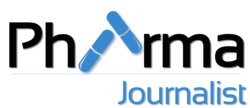European Commission Approves DARZALEX (daratumumab)-SC Quadruplet Regimen for Transplant-Eligible Patients with Newly Diagnosed Multiple Myeloma
Janssen-Cilag International NV, a Johnson & Johnson company, announced that the European Commission (EC) approved the indication extension for DARZALEX (daratumumab) subcutaneous (SC) formulation in combination with bortezomib, lenalidomide and dexamethasone (daratumumab-VRd) in patients with newly diagnosed multiple myeloma (NDMM) who are eligible for an autologous stem cell transplant (ASCT). Patients will have the opportunity to receive this daratumumab SC-based quadruplet therapy at initial diagnosis, providing them with a new treatment shown to significantly improve outcomes.
This approval is supported by data from the Phase 3 PERSEUS study, which evaluated daratumumab SC-based quadruplet regimen for induction and consolidation therapy, followed by daratumumab SC and lenalidomide (D-R) maintenance therapy, compared to bortezomib, lenalidomide and dexamethasone (VRd) during induction and consolidation, followed by lenalidomide (R) maintenance in 709 patients with NDMM eligible for ASCT.
“Multiple myeloma is a complex and highly varied disease, which reinforces the need for continuous innovation in first-line treatment strategies to deepen responses, reduce relapse and ultimately improve long-term outcomes,” said Dr. Paula Rodriguez-Otero, Department of Hematology, Cancer Center Clínica Universidad de Navarra, Pamplona, Navarra, Spain.* “The EC approval of this daratumumab SC-based quadruplet regimen offers a practice-changing new option, that has shown the potential to significantly improve progression-free survival, complete response rates, and MRD-negativity status compared to the current standard of care.”
Findings from the PERSEUS study, after a median follow-up of 47.5 months, demonstrated a significant improvement in the primary endpoint of progression-free survival (PFS), with the daratumumab-VRd regimen reducing the risk of disease progression or death by 58 percent compared to VRd (hazard ratio [HR], 0.42; 95 percent confidence interval [CI], 0.30-0.59; p<0.0001). Treatment with daratumumab-VRd resulted in deeper responses compared to VRd with overall minimal residual disease (MRD)-negativity rate assessed at 10-5 of 75.2 percent vs. 47.5 percent (p<0.001), complete response or better of 87.9 percent vs 70.1 percent (p<0.001) and importantly, sustained MRD negativity for ≥12 months of 64.8 percent vs 29.7 percent, respectively.
“The European Commission’s approval of this daratumumab quadruplet regimen marks a pivotal step forward in the treatment of newly diagnosed multiple myeloma,” said Edmond Chan, MBChB, M.D. (Res), Senior Director, EMEA Therapeutic Area Lead Haematology, Innovative Medicine, Johnson & Johnson. “By incorporating daratumumab SC into this regimen we are further optimising frontline therapy for patients, building on our aim to transform outcomes, and establish new standards of care for eligible patients from induction through to maintenance.”
The overall safety profile of daratumumab-VRd was consistent with the known safety profiles for daratumumab SC and VRd.2 The most common haematologic adverse reactions (≥20 percent) in patients with multiple myeloma who received daratumumab-VRd vs VRd were neutropenia (69.2 percent vs 58.8 percent), thrombocytopenia (48.4 percent vs 34.3 percent) and anaemia (22.2 percent vs 20.7 percent).2 The most common non-hematologic adverse reactions (≥20 percent) in patients with multiple myeloma who received daratumumab-VRd vs VRd were peripheral neuropathy (53.6 percent vs 51.6 percent), fatigue (23.9 percent vs 26.5 percent), peripheral oedema (20.5 percent vs 21.3 percent), pyrexia (31.6 percent vs 31.4 percent), upper respiratory infection (31.6 percent vs 25.1 percent), COVID-19 (35 percent vs 23.9 percent), constipation (33.9 percent vs 34.0 percent), diarrhoea (61.0 percent vs 54.2 percent), back pain (22.8 percent vs 19.0 percent), insomnia (27.1 percent vs 17.6 percent), asthenia (26.8 percent vs 25.6 percent) and rash (23.4 percent vs 27.1 percent).2
“Since its first approval in 2016, over half a million patients worldwide have been treated with daratumumab, and today’s approval reinforces our commitment to bringing this transformative therapy to more patients as a first-line treatment, where it has the greatest potential for impact,” said Jordan Schecter, M.D., Vice President, Disease Area Leader, Multiple Myeloma, Innovative Medicine, Johnson & Johnson. “At Johnson & Johnson, we continually challenge ourselves to one day eliminate cancers like multiple myeloma, and today’s milestone marks a significant step toward achieving that goal.”

